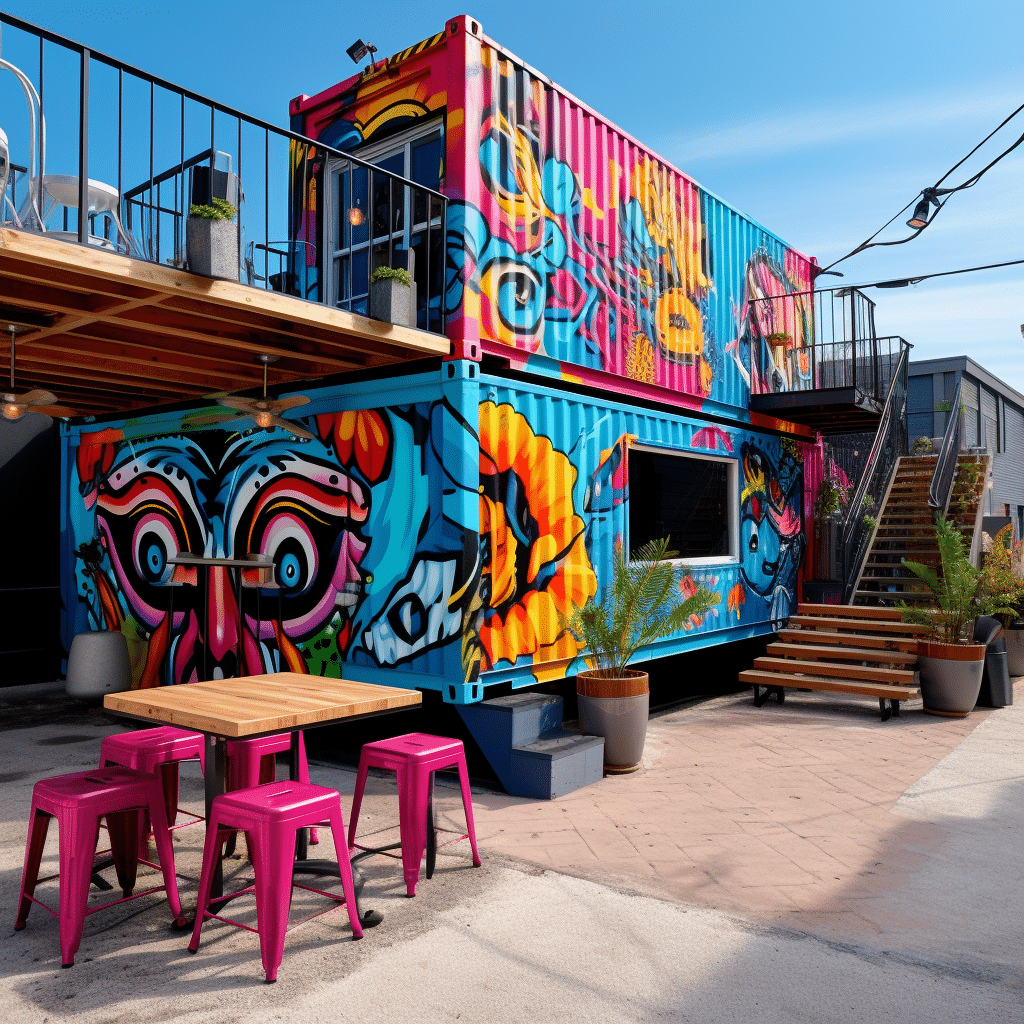Key Takeaways
- Shipping container bars are eco-friendly and cost-effective solutions for community spaces.
- Design flexibility and quick assembly times are vital benefits.
- They offer unique aesthetics and can be customized for various themes and events.
- Implementing shipping container bars can revitalize urban areas.
Why Shipping Container Bars Are a Smart Choice
In recent years, shipping container bars have gained traction as creative and practical solutions for community hubs. Utilizing shipping container architecture not only promotes sustainability but also reduces construction costs. These innovative structures, often built from repurposed shipping containers, provide local entrepreneurs and community organizers with an affordable way to create distinctive social spaces that attract diverse groups of people. This blend of innovation and pragmatism has made shipping container bars popular in urban areas looking for regeneration and community engagement.
Design Flexibility and Customization
One of the standout features of a shipping container bar is its remarkable design flexibility. These containers can be stacked, arranged, and customized for aesthetic vision. The possibilities are endless, whether you’re aiming for a minimalist design with clean lines or a vibrant, themed environment that reflects local culture. Recent examples of innovative designs highlight just how diverse these structures can be. The modular nature of shipping containers means each unit can be tailored to serve specific functions, such as a dance floor, a cozy seating area, or even a stage for live music. This versatility allows community spaces to evolve and adapt to different needs and events.
Environmental Benefits
Shipping container bars offer significant environmental benefits, making them an attractive choice for eco-conscious communities. Repurposing containers reduces waste and promotes the recycling of materials, contributing to a circular economy. Unlike traditional construction methods that often generate substantial waste and require extensive use of new materials, building with shipping containers is more resource-efficient. This eco-friendly approach aligns with growing trends towards sustainable living and green architecture. Moreover, these structures can often be outfitted with additional eco-friendly features, such as solar panels or rainwater collection systems, further enhancing their environmental credentials.
Cost-Effectiveness
Compared to conventional construction, using shipping containers is remarkably cost-effective. These structures require fewer materials, and the construction timeline is typically shorter, significantly reducing labor costs. This makes shipping container bars a financially viable option for small business owners and community organizations working within tight budgets. The financial savings can be redirected towards other essential aspects, such as interior design, high-quality furnishings, or event programming, which can enhance the overall user experience. By lowering the initial costs, shipping container bars allow for greater financial flexibility and create a more sustainable business model in the long run.
Quick Assembly Times
An attractive feature of shipping container bars is the speed with which they can be assembled. Since the main structure is already in place, the focus shifts to interior design and functional adjustments. This efficiency means that a shipping container bar can go from concept to operational in weeks rather than months. This ability to rapidly deploy facilities is invaluable for communities looking to establish new social spaces quickly. The quick assembly also means less disruption to the community during construction, and the new venue can start generating revenue and fostering social interactions much sooner than traditional builds would allow.
Unique Aesthetics
The industrial charm of shipping container bars sets them apart from other venues. Their distinct look can attract a diverse clientele eager to experience a unique setting. These bars often become landmarks in their own right, drawing attention and foot traffic to surrounding businesses and enriching the local economy. The bold aesthetics of a shipping container bar can serve as a blank canvas for artistic expression, allowing local artists to contribute to its decor and atmosphere. This can foster a sense of community ownership and pride, making the venue a central hub for social activities and cultural exchange.
Case Studies: Successful Implementations
Numerous examples around the world highlight the success of shipping container bars. These structures have revitalized areas and provided unique social experiences, from urban pop-ups to permanent installations. A notable example is the Boxpark in London, which has become a vibrant community hub. Hosting various events, from food festivals to art exhibitions, Boxpark has successfully promoted local artists and vendors, contributing to the area’s cultural and economic vitality. Such examples demonstrate the potential for shipping container bars to meet practical needs and enhance community cohesion and local vibrancy.
Conclusion: Revitalizing Community Spaces
Shipping container bars offer a versatile, eco-friendly, cost-effective solution for creating vibrant community hubs. Their unique design aesthetics and quick assembly times make them attractive for community organizers and entrepreneurs. By investing in these innovative structures, communities can foster social interactions, support local economies, and promote sustainable living. With their ability to adapt to various functions and themes, shipping container bars have the potential to become permanent fixtures in community landscapes, contributing to the social and economic fabric of the neighborhoods they serve.

